Charles Leclerc's Dream Dish? Tortellini!
If you can't find homemade tortellini, store bought is fine
Welcome to Grand Prix Gastronomy! In 2024, this series is dedicated to cooking the favorite dishes of every driver on the grid.
The Foods That Charles Leclerc Loves
Ah, my sweet Charles Leclerc. Here is yet another driver who selected pizza as his favorite meal. This fella is a big fan of margherita pizza with prosciutto (a fine choice, if I say so myself), but if I made pizza for everyone who said they loved pizza, I wouldn't be making much else.
Instead, my choice for Charles stems from this extremely awkward SF1000 presentation, where they discuss tortellini. Honestly, don't even watch it; they did Charles dirty, and it's super awkward. Ignore that. Make tortellini instead.
I could have placed Charles alongside the Monaco Grand Prix to call back to his heritage, but… I really wanted to give that weekend to one Mr. Fernando Alonso. Instead, we're celebrating Leclerc's eternal reign at Ferrari by making his favorite for the ol’ Italian Grand Prix at Monza.
This Week's Recipes
I have never made pasta before, so I wanted to go in for the good stuff with a source I could trust: Italian Recipe Book; the author of this blog married an Italian fella and quickly learned how to make many of his favorite comfort foods. I'm turning to this site for my tortellini recipe — which I'll be serving with a nice creamy sauce (also pulled from the Italian Recipe Book website!). The great news with this week's dish is that if you're not keen on committing to making homemade pasta, you can also just get tortellini at most grocery stores!
Also, because I'm a masochist, I decided that tortellini would not be enough, and that I should go ahead and also try my hand at ciabatta. My husband says this is all too much to be attempting to do all at once. I have argued that it'll be no big deal since they're both made of flour and they're both staple foods. Stay tuned to find out which one of us is correct!
Core Recipes:
Supplemental Recipes:
Cooking Tortellini
For this edition of Grand Prix Gastronomy, you'll need to set aside about 15 minutes on one day, and a few hours the next day, if you want to do the ciabatta and tortellini combo.
That's because if you're making the ciabatta, you definitely want to give your biga — or, your starter or sponge — plenty of time to rest overnight. The biga is made of a little bit of flour, yeast, and water, which you let rest for 8 to 24 hours covered at room temperature.
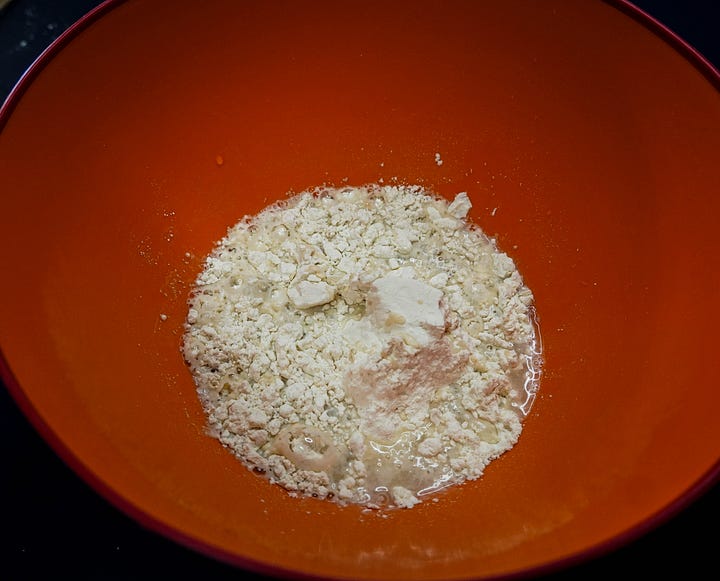
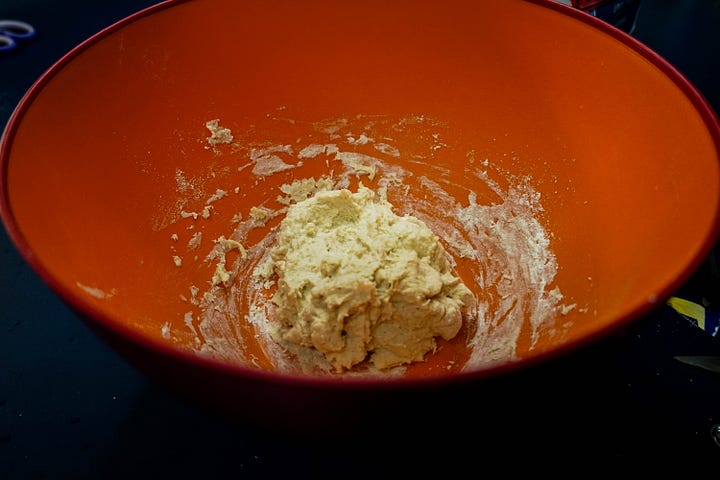
The next day, the biga should be light and fluffy, and you can start your dough. Using a stand mixer, combine flour, salt, yeast, water, milk, and your biga until it makes a shaggy dough, then swap to the dough hook and really let it knead for 10 minutes — or until the dough is super shiny. Transfer it to a bowl and cover with plastic wrap, then let it rise. Fold the dough and let it rise again a few different times — then cut your dough in half and shape your ciabatta, letting it rest for another 30 minutes before popping it into a pre-heated oven. Spray them generously with water when you put them in the oven; that's how you get your crisp crust!
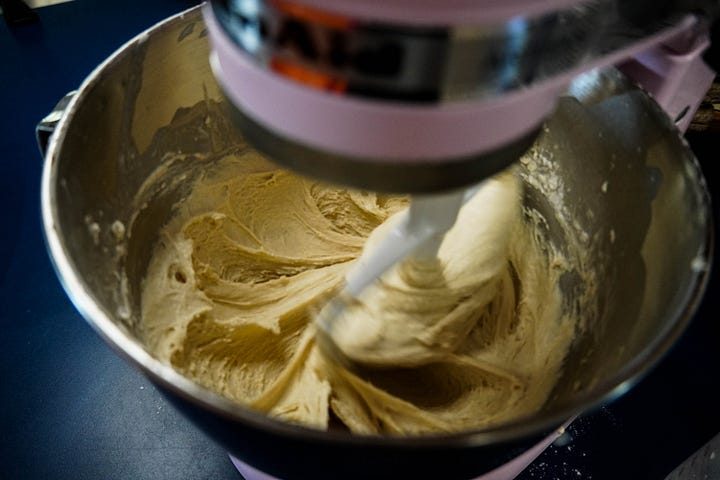
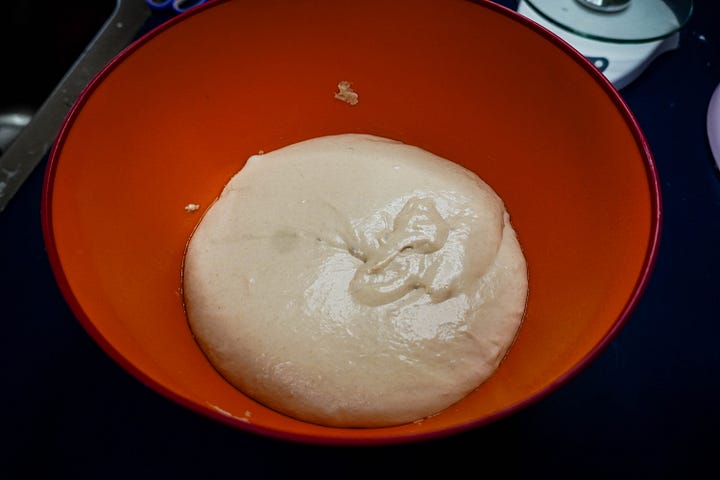
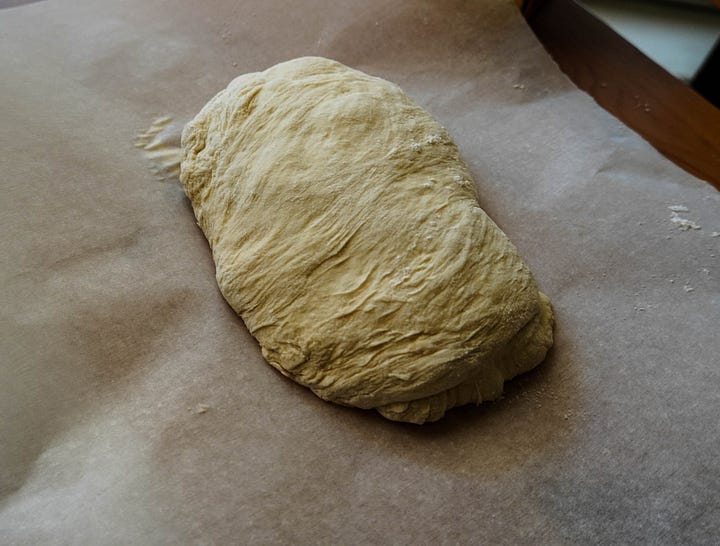
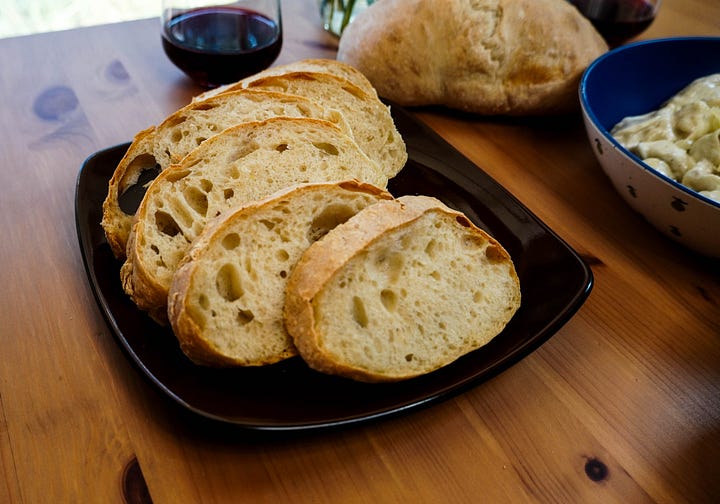
Next you'll want to work on your tortellini. Cook up some pork loin, then grind it up with prosciutto and mortadella. Mix all the ground meat with parmesan and an egg, then let the filling rest.
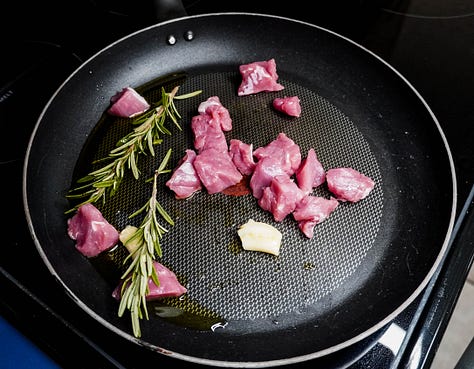
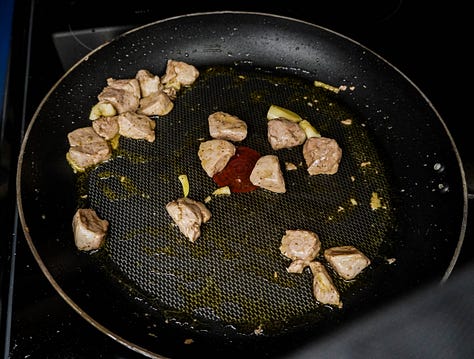
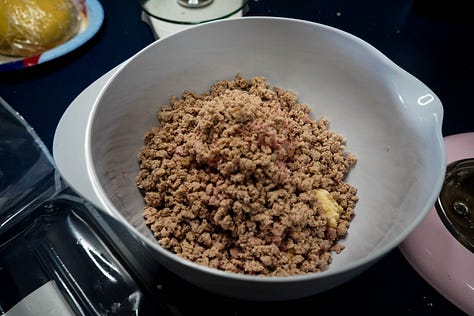
You'll make your dough with eggs and flour, kneading until the dough is soft, elastic, and uniform. Wrap it in plastic wrap and let it rest for at least 30 minutes.
Using a pasta machine, run your dough through in small amounts until you have a nice flat sheet, then cut that sheet into squares — being careful to keep everything covered so the dough doesn't dry out.


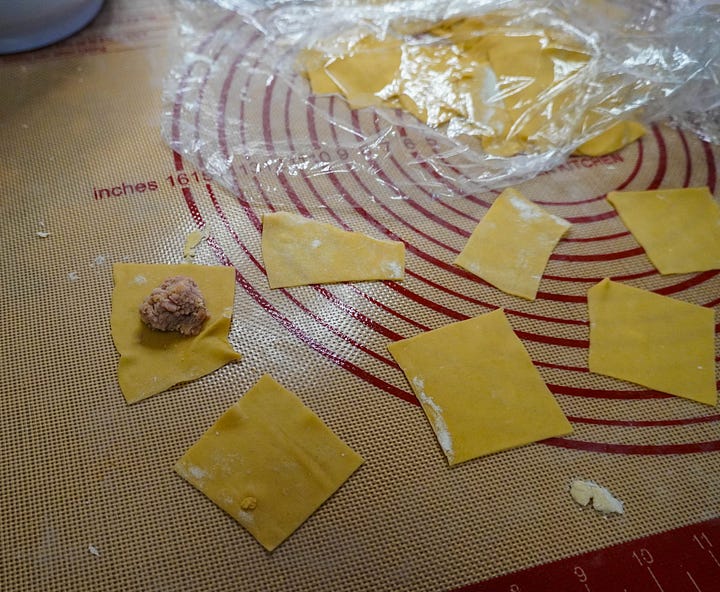
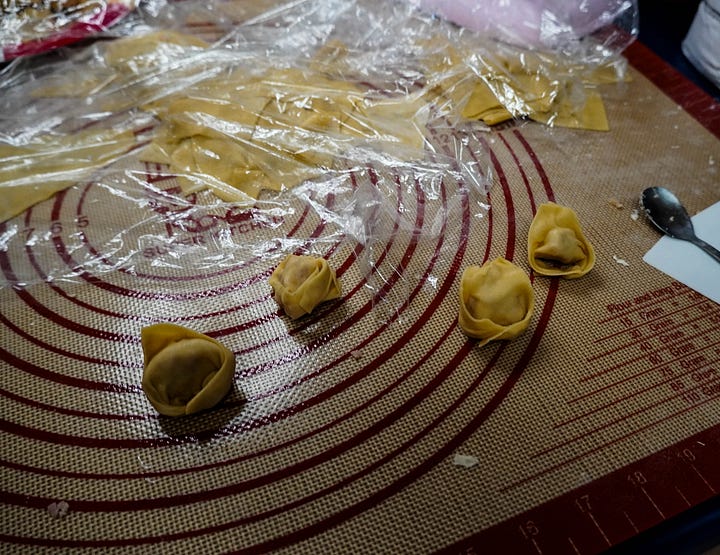
Place a little tortellini filling in the middle of your square, then fold one corner up to meet the other, making a triangle. Fold the sides of the triangle upward, then pinch the two dough points together. This description is horrible from me, I know, but this video can help you visualize better how to form your tortellini.
Once your tortellini are shaped, boil them in salted water.
Your sauce for this recipe is really simple: Melt some butter, then stir in heavy cream. Once you see some bubbles, add in nutmeg and let everything reduce. I like to add my parmesan here, whisking it into the sauce. Then toss in your strained tortellini and serve with lots of extra parmesan on top!
The Wine List
I wanted to opt for an Italian wine to pair with my Italian meal, and I opted for a tasty Valpolicella.
A lot of aspiring wine snobs will tell you that you shouldn't pair red wine with white pasta sauce, but I'm not going to listen to anyone who tells me what I should or shouldn't do. More than anything, when you're pairing a wine to a dish, you just don't want your wine to overwhelm your meal, or for your meal to overwhelm your wine.
Valpolicella is great because it's really light in body and tannins — meaning that it's not the kind of red wine you want to pair with a big, meaty steak. However, it is exactly the kind of wine that goes really well with a hearty cream sauce and pork-filled tortellini.
So, What's The Verdict?
Who won the debate between my husband and me? Was the tortellini and ciabatta combination simply Too Much Effort? Or was it an easy peasy breeze?
Well — it was neither! And I loved it.
Making homemade pasta and bread all at the same time is not for the faint hearted, or for the folks who are seriously pressed for time. But if you can carve out a few hours over two consecutive days to really treat yourself to the meditative process of working with flour, yeast, eggs, and water, you won't regret it.
It's kind of cool to work with your hands — to knead the dough and shape the loaves and fold little squares of pasta. It's cool to realize you're starting to move quicker as you get the hang of it, and to feel yourself better understanding the process of what you're doing.
It's also cool to see your effort pay off. I've been trying to make ciabatta for about 100 years, and this was the first time I was happy with the crumb structure inside the loaf. The crust could have been a little, well, crustier — but now that I've figured out how to get that airy, squishy crumb inside, I have a much better idea of what I need to do to enhance the crust.
And I'm also so excited to make pasta again, especially a filled pasta. It was really cool to realize that I was capable of making this whole meal work, and work decently well. Sure, the tortellinis kinda looked like fucked up little dumplings, but who cares? I made them! They were delicious! Sure, the ciabatta could have benefitted from a crisper crust, but who cares? That crumb structure was phenomenal! Sure, I could have put this whole meal together way quicker with some pre-packaged tortellini and a frozen loaf of ciabatta, but why not try something new? Why not challenge yourself? Why not cosplay as an Italian nonna for a night?
Ready… Set… COOK!
If you’re interested in seeing the progression of Grand Prix Gastronomy, you’ll be able to do so in a few places. Instagram will feature most of the visual content, while Substack will be a little wordier. If you need a handy mid-week roundup, you’ll be able to find those on Twitter.
Here are all the relevant links in one place, if you want to subscribe:
All Grand Prix Gastronomy-related content will be free — but if you want to drop me a donation on PayPal, that’s always welcome.
Plus, if you're looking to delve deeper into motorsport history, don't forget to check out my new podcast, Deadly Passions, Terrible Joys! I have a Patreon; sign up, and you'll receive extra content!










This feels like a great excuse to keep celebrating his win at Monza! Love the dedication to making both pasta AND bread, I personally would have been crying on the kitchen floor ha!